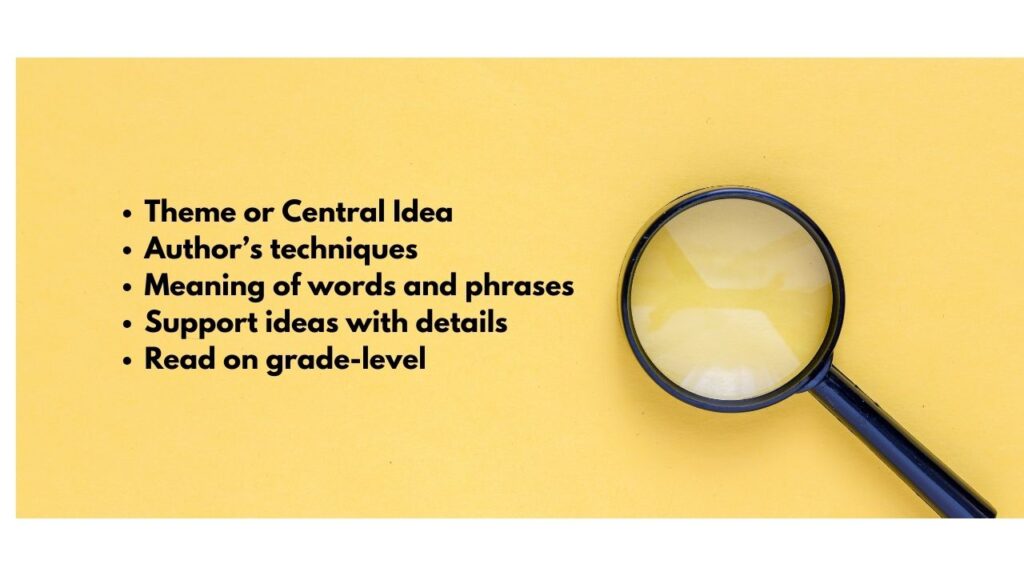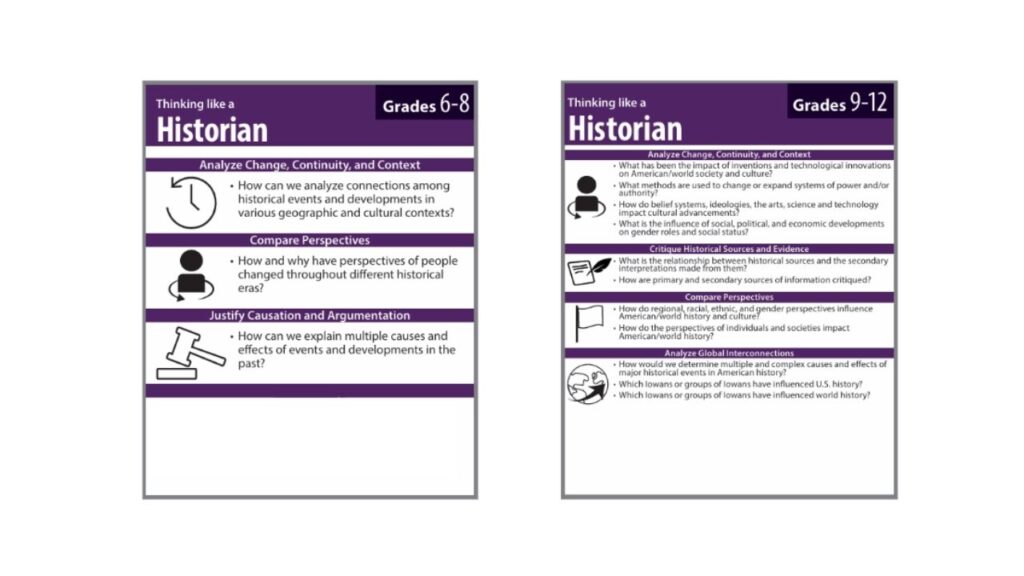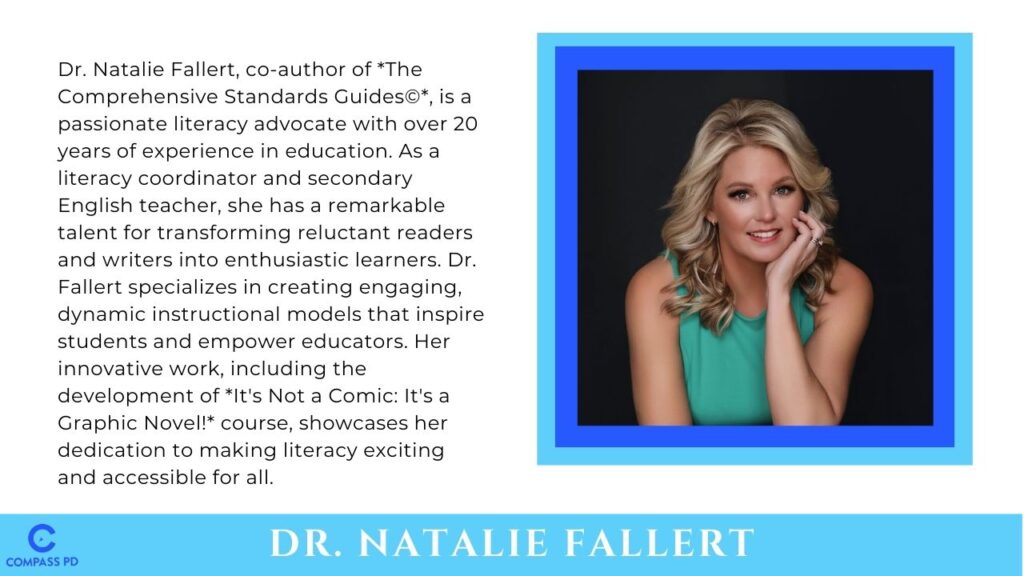ELA Test Prep, Reimagined: Practical Tips for Real Results
By Dr. Natalie Fallert
Test prep—two dreaded words for both teachers and students. While I firmly believe that the best test preparation is year-round instruction in reading and writing, I also recognize that many schools require dedicated test prep units. If we must do it, let’s do it right.
Focus on Priority Standards
I have worked in numerous states with ELA teachers in grades 6-12, and there are common standards that are sure to be included in every state standardized exam.
- Theme or central idea
- Author’s techniques to achieve a purpose
- Interpreting the meaning of words and phrases
- Supporting ideas with key details
- Reading on grade-level texts

For each of these standards, a few quick tips can help students, which are broken down later. Supporting ideas with key details or citing textual evidence is rarely a stand-alone question. Many tests have two-part questions where part A asks about the theme, central idea, word/phrase meaning, etc, and part B asks for text evidence that supports their chosen answer in part A. Unfortunately, the last bulleted standard is not a quick fix that can occur during a test prep unit. These tests are designed using grade-level texts, so it is essential that kids read independently all year to grow their reading skills and that they are consistently exposed to grade-level texts. No amount of test prep will help a student score proficient if they are well below grade level in reading.
Think like a test maker
During my tenure in education, I have written and reviewed exams for state tests and Advanced Placement textbooks. Believe it or not, there are manuals that teach how to write and review test questions. Teach students to think like test writers. Some teachers might ask students to create test questions, which isn’t a bad practice, but let’s face it: kids rarely produce the quality of questions experienced on standardized tests.
Instead, give students a practice (released) test1 with the answers already selected and ask them to analyze it by asking:
- Why is this answer correct?
- What makes each other choice wrong?
- Where in the text supports your choices?
It is important to point out that answers are there to try and trip them up, or they use particularly enticing wording. For instance, they may use direct wording from the text, knowing that students will choose it simply for that reason. Another common tactic is to use partially correct answers. It might use two adjectives to describe the tone of the selection; one is accurate, but the other is incorrect, which makes that answer choice wrong.
Doing this in partnerships or small groups is helpful. They become detectives using critical thinking to solve a problem.
Ask them to look for patterns or commonalities between passages and questions. When they can see how a test writer thinks and find predictable patterns, they better understand what to look for and what skills or strategies to apply while reading the passages and answer choices.
A slight tinge of competitiveness comes into play here. When kids pit themselves against the test writers, it can become a game of who can outsmart who. As I like to say, this little nudge can make a big difference in motivating kids to “stick it to the man.”
Teaching kids to analyze tests is also beneficial for teachers, who can use this knowledge to create formative and summative assessments throughout the year. Identifying patterns and mimicking them will offer students multiple exposures to the rigor of these questions.
High-leverage test-taking reading strategies
Now that students better understand how tests are designed, let’s focus on specific strategies they can use to tackle different types of passages. First, I always remind students of the purpose of reading during these tests. Don’t get me wrong; it is good practice to always give students a specific purpose for reading, but it is important to call out reading for standardized tests (Serravallo, 2024). Here is my verbatim spiel:
“Remember, you are reading for one sole purpose–to answer questions! That is it. You are not expected to be experts or even remember this in an hour. You have to know it for (x) minutes, and then you can forget it. You also have access to the passage at any moment, so don’t get hung up on every detail, and don’t try to fall in love with the characters. Read it and move on!”
Then, I move into a few high-leverage strategies specific to nonfiction and fiction. I have studied and written enough tests to narrow down a few strategies that will not overwhelm yet equip students right before tackling the test.
Nonfiction Strategies
- Focus on word choice to help determine the main idea or the message. Look for words that
- seem important to the content or context
- relate
- repeat
- have strong connotations (+ or -)
- Look for words that shift or connect thoughts or ideas to help explain the purpose or how the author achieves that purpose.
- Focus on the author’s techniques, such as statistics, examples, personal experience, or descriptions. These also help with the purpose and will help readers explain why the author used that particular technique.
- Teach them to examine the genre—social studies, science, etc. One great strategy to teach throughout the year (and reiterate during test prep) is thinking like these people. Iowa offers great handouts with prompting questions for all grade levels: Elementary, Middle School, and High School.

Fiction Strategies
- Who is/are the character(s)?
- What perspective – not 1st, 2nd, etc, but child, reflective, adult?
- How do the characters interact through dialogue and actions?
- Context clues to read around a word for meaning.
- Where is it taking place? Does the setting description help set the tone?
Navigating the format
Finally, it is always good to introduce kids to the format and layout of the test, especially if it is online. Don’t assume they have done this or remember it from previous years. Many testing platforms change and update tests regularly. In my state, the platform and company between K-8 and 9-12 are different, which alters the testing experience.
- Give them a day to play around with the various tools, and make sure you call out visual elements like bolded or italicized words, two-part, interactive, or multiple-select questions.
- Point out that the wording in question gives expectations or hints that kids should choose multiple answers.
- Give them time to practice with editing, annotating, and highlighting tools.
Conclusion
The recent NAEP report and media bashing of the public education system feel like another stab at educators for failing our students. This could scare many into reactive mode, wanting to push even more test prep. Please don’t do that! Instead of rote packets or practice, try teaching explicit and specific high-leverage strategies to help students on these state tests, which can also be transferred to everyday reading tasks.
If your school emphasizes test prep, try blending these strategies into regular lessons rather than isolating them into a separate unit. For example, test-style questions can be incorporated into discussions of novels and informational texts throughout the year.
What test prep strategies have worked in your classroom? Share your thoughts, and let’s build a smarter approach together!
1Many states offer free, accessible practice/released tests/items. A quick Google search can provide additional resources for practicing this work. You might not find an exact test for your state, but I am sure you will find something you can use without reinventing the wheel.
References:
The Nation’s Report Card Shows Declines in Reading, Some Progress in 4th Grade Math
Harris, S. (2025, January 29). The nation’s report card shows declines in reading, some progress in 4th grade math. The Nation’s Report Card Shows Declines in Reading, Some Progress in 4th Grade Math. https://www.nagb.gov/news-and-events/news-releases/2025/nations-report-card-decline-in-reading-progress-in-math.html
Reading Scores Fall to New Low on NAEP, Fueled by Declines for Struggling Students
Schwartz, S. (2025, January 29). Reading scores fall to new low on NAEP, fueled by declines for struggling students. Education Week. https://www.edweek.org/leadership/reading-scores-fall-to-new-low-on-naep-fueled-by-declines-for-struggling-students/2025/01

